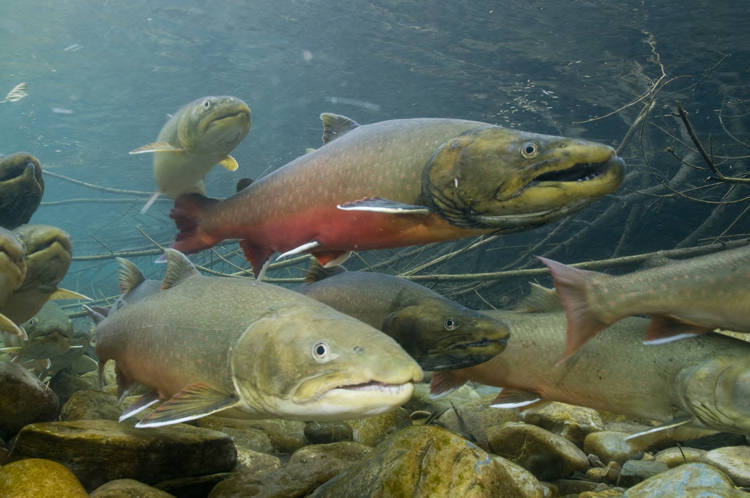The Region 1 bull trout redd counts are in . . .
Montana Fish, Wildlife & Parks (FWP) Fisheries Field crews have completed the annual inventory of bull trout spawning sites in the Clark Fork, Flathead, and Kootenai drainages, which comprise northwest Montana’s FWP Region One. Experienced observers walk known spawning areas and count the number of spawning nests called redds. Female bull trout excavate a depression in the streambed where she deposits her eggs which are immediately fertilized by a male. These nests, called redds, are typically four to six feet long by three feet wide, or even larger and are easily identified when walking down the stream channel. Redd counts are indicative of the abundance levels of spawning adult bull trout each year. Redd counts are used to assess status and trends in bull trout populations in northwest Montana.
According to Region One Fisheries Program Manager Mark Deleray, there are no surprises in the 2014 bull trout redd counts for the Clark Fork, Flathead, and Kootenai drainages in Northwestern Montana.
“In FWP Region One waters, bull trout redd numbers appear stable in all basins, being very similar to 10-year averages,” says Deleray. “In each basin, this year’s count may be slightly higher or lower than last year’s, but not significantly different than recent years.” Deleray adds that his staff and cooperators put in a significant amount of field time to collect these data every year. Avista and the Bonneville Power Administration provide funding assistance…
Read more . . .
